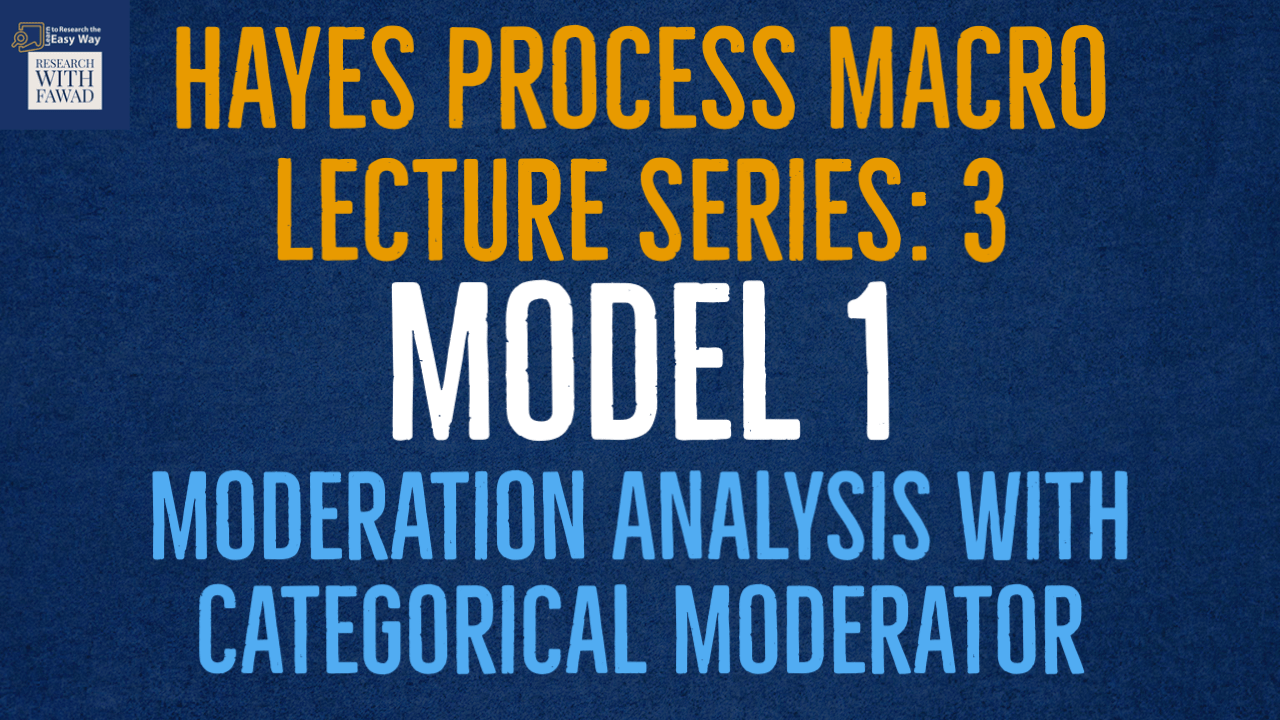
Hayes Process Macro - Lecture Series
The tutorial will guide on Model 1 of the Hayes Process Macro for Moderation Analysis using Categorical Moderator, and Continuous Independent & Dependent Variables.

The tutorial will guide on Model 1 of the Hayes Process Macro for Moderation Analysis using Categorical Moderator, and Continuous Independent & Dependent Variables.
Preliminary notes:
Example
Next,Click Continue, and Press Multicategorical button, and for Variable W, click Multicategorical and select the coding system indicator (Dummy Coding). If you would like to know more about Dummy Coding, Click Here
W1 – Medium vs Small (Small is Reference Category)
W2 – High vs Small
Next session focuses on How to Analyze a Categorical Independent and Categorical Moderator with Continuous Dependent Variable using Hayes Process Macro.